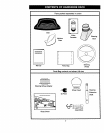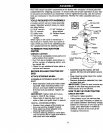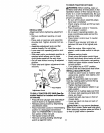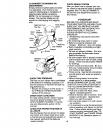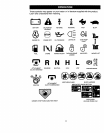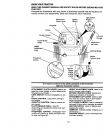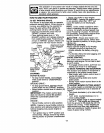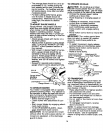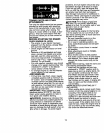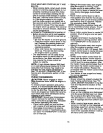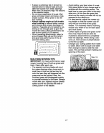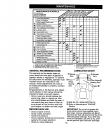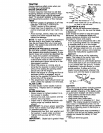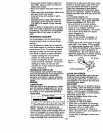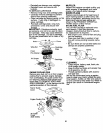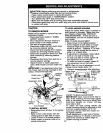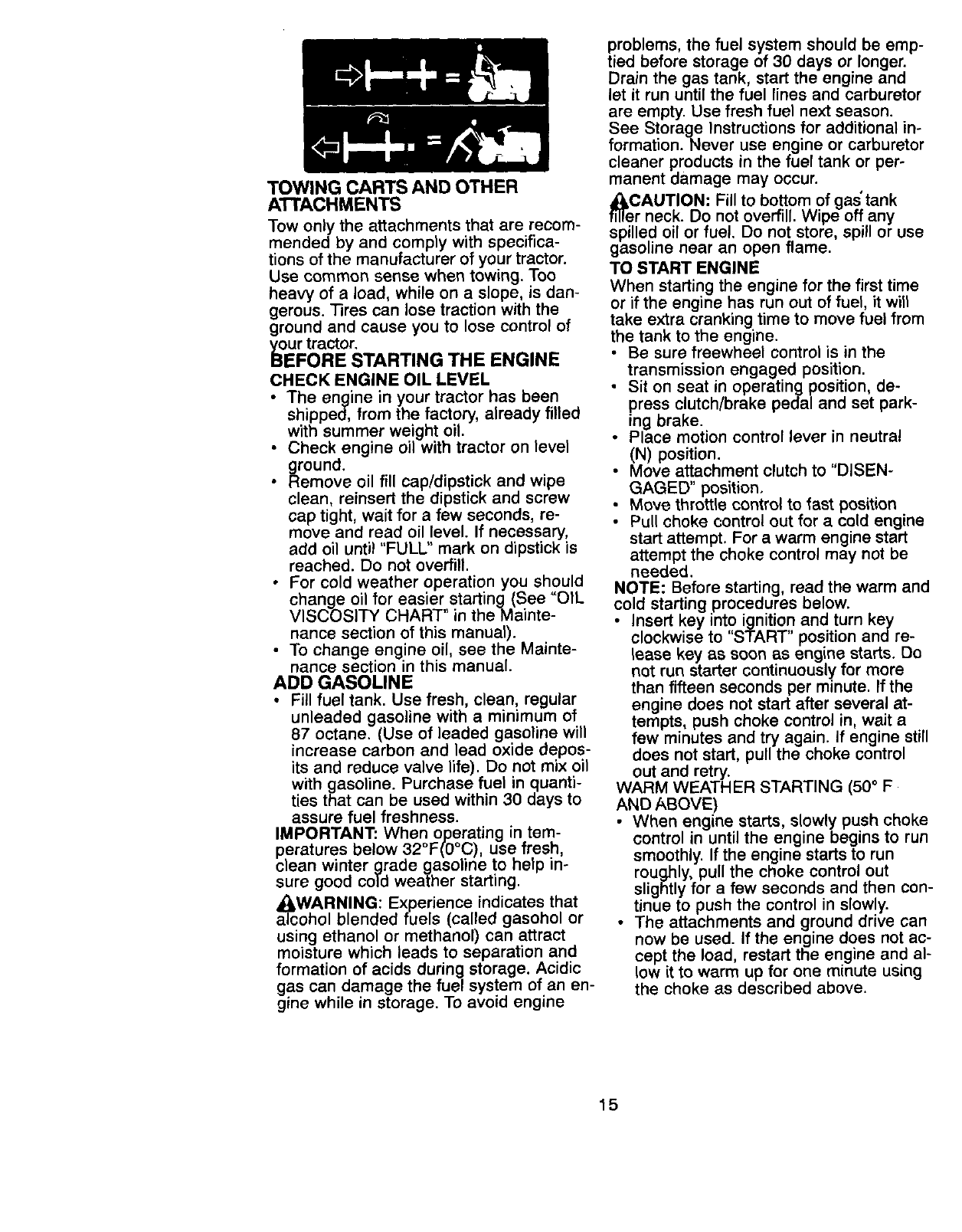
TOWINGCARTS AND OTHER
ATTACHMENTS
Towonlythe attachments that are recom-
mended by and comply with specifica-
tions of the manufacturer of your tractor.
Use common sense when towing. Too
heavy of a load, while on a slope, is dan-
gerous. Tires can lose traction with the
ground and cause you to lose control of
_our tractor.
EFORE STARTING THE ENGINE
CHECK ENGINE OIL LEVEL
• The engine in your tractor has been
shipped, from the factory, already filled
with summer weight oil.
• Check engine oil with tractor on level
ground.
• Remove oil fill cap/dipstick and wipe
clean, reinsert the dipstick and screw
cap tight, wait for a few seconds, re-
move and read oil level. If necessary,
add oil until "FULL" mark on dipstick is
reached. Do not overfill.
• For cold weather operation you should
change oil for easier starting(See "OIL
VISCOSITY CHART" in theMainte-
nance section of this manual).
• To change engine oil, see the Mainte-
nance section in this manual.
ADD GASOLINE
• Fill fuel tank. Use fresh, clean, regular
unleaded gasoline with a minimum of
87 octane. (Use of leaded gasoline will
increase carbon and lead oxide depos-
its and reduce valve life). Do not mix oil
with gasoline. Purchase fuel in quanti-
ties that can be used within 30 days to
assure fuel freshness.
IMPORTANT: When operating in tem-
peratures below 32°F(0 C), use fresh,
clean winter grade gasoline to help in-
sure good cold weather starting.
_WARNING: Experience indicates that
alcohol blended fuels (called gasohol or
using ethanol or methanol) can attract
moisture which leads to separation and
formation of acids during storage. Acidic
gas can damage the fuel system of an en-
gine while in storage. To avoid engine
problems, the fuel system should be emp-
tied before storage of 30 days or longer.
Drain the gas tank, start the engine and
let it run until the fuel lines and carburetor
are empty. Use fresh fuel next season.
See Storage Instructions for additional in-
formation. Never use engine or carburetor
cleaner products in the fuel tank or per-
manent damage may occur.
_eCAUTION: Fill to bottom of gas'tank
r neck. Do not overfill. Wipe off any
spilled oil or Tuel. Do not store, spill or use
gasoline near an open flame.
TO START ENGINE
When starting the engine for the first time
or if the engine has run out of fuel, it will
take extra cranking time to move fuel from
the tank to the engine.
• Be sure freewheel control is in the
transmission engaged position.
• Sit on seat in operating position, de-
press clutch/brake pedal and set park-
ing brake.
• Place motion control lever in neutral
(N) position.
• Move attachment clutch to "DISEN-
GAGED" position.
• Move throttle control to fast position
• Pull choke control out for a cold engine
start attempt, For a warm engine start
attempt the choke control may not be
needed.
NOTE: Before starting, read the warm and
cold starting procedures below.
• Insert key into ignition and turn key
clockwise to "START" position andre-
lease key as soon as engine starts. Do
not run starter continuously for more
than fifteen seconds per minute. If the
engine does not start after several at-
tempts, push choke control in, wait a
few minutes and try again. If engine still
does not start, pull the choke control
out and retry.
WARM WEATHER STARTING (50 ° F
AND ABOVE)
• When engine starts, slowly push choke
control in until the engine begins to run
smoothly. If the engine starts to run
roughly, pull the choke control out
slightly for a few seconds and then con-
tinue to push the control in slowly.
• The attachments and ground drive can
now be used. If the engine does not ac-
cept the load, restart the engine and al-
low it to warm up for one minute using
the choke as described above.
15



